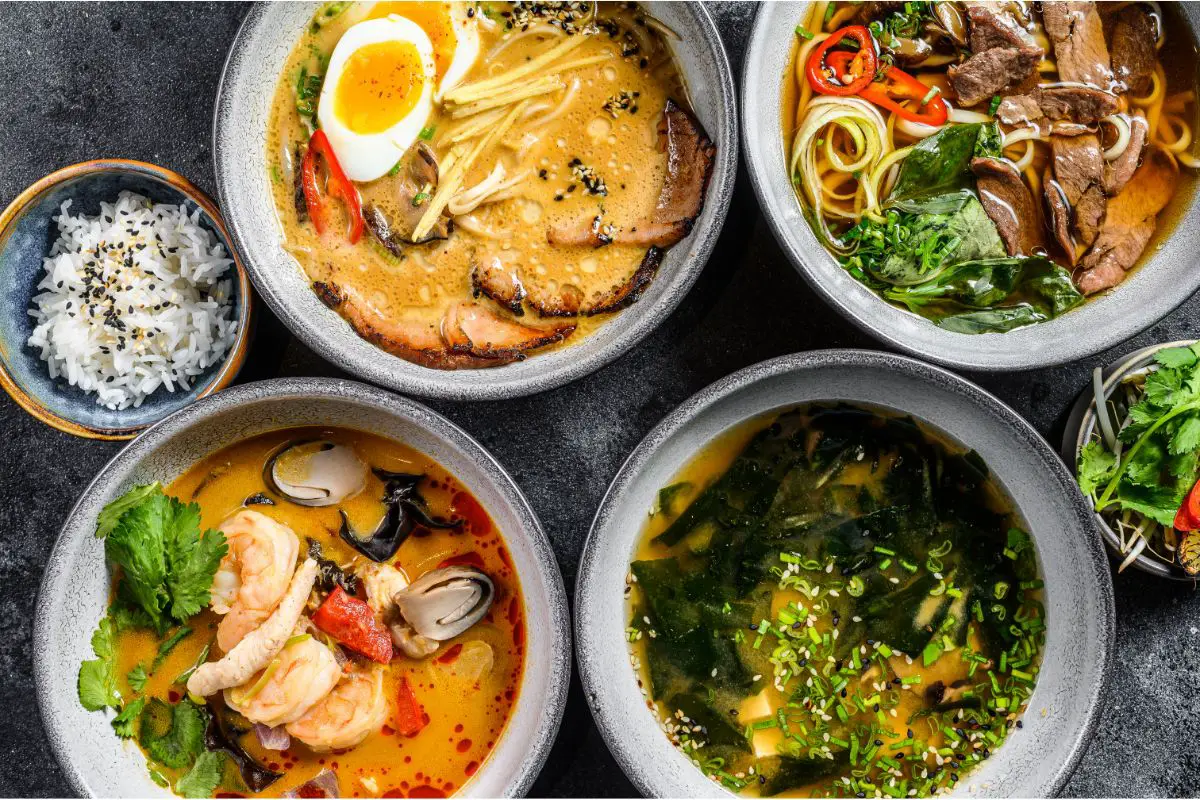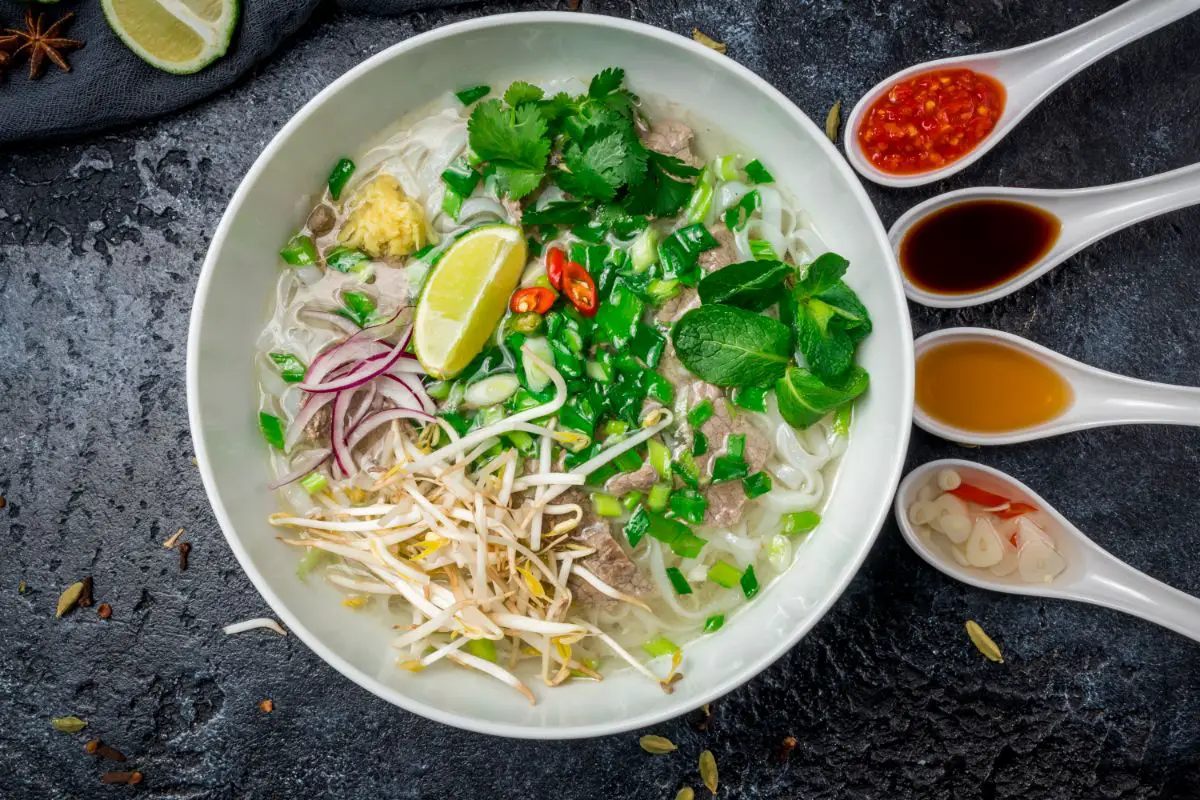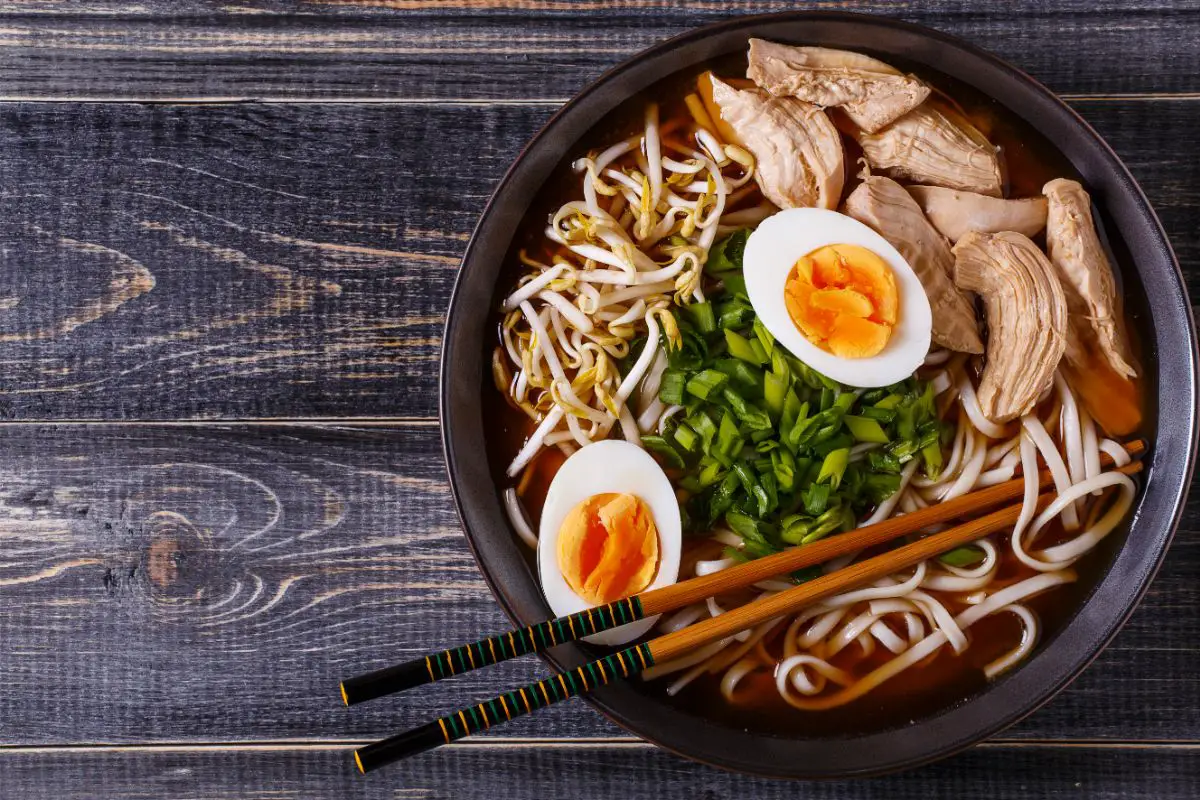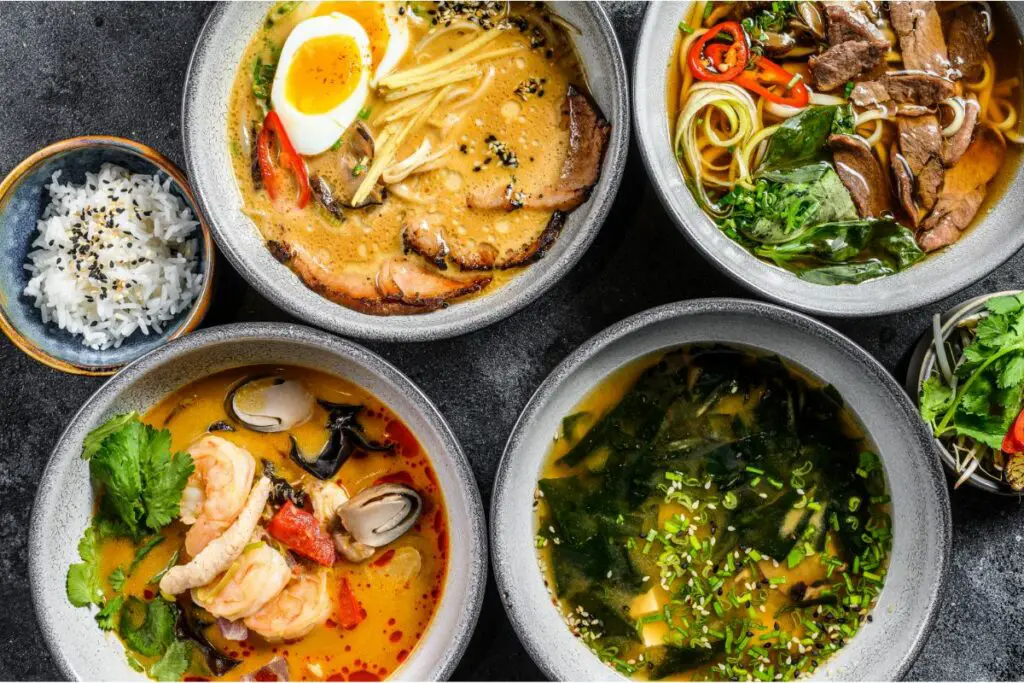Can’t tell the difference between pho and ramen? You’re not the only one! Both noodle soups look similar, after all, and can seem identical, especially if you’re yet to try them for the first time.

But pho and ramen are far from the same. There are several differences between these popular dishes, and it comes down to origin, ingredients, flavor, and nutritional value.
The short answer?
While both dishes involve noodles, pho is a Vietnamese dish while ramen is a Japanese dish. Pho has a more mild, herbier taste, and is more beef-based, while ramen is richer and saltier, and more pork-based. Pho also tends to have lower carbs and fat while ramen has fewer calories.
Despite the differences, one thing’s for sure: both are tasty, comforting, and super versatile!
And if you want to know more about pho and ramen, including which one you should eat, you’ll find more information below.
What Is Pho?

Pho is a Vietnamese noodle soup that is made from rice noodles typically served in a beef broth, flavored with different herbs and spices. It’s usually served with beef, but can sometimes be topped with chicken, as well as other toppings that enhance its flavor.
Pho has been a popular dish in Vietnam since the 20th century, and is actually considered a breakfast meal in Vietnam – despite being consumed for dinner in other countries around the world! Still, Vietnamese people enjoy pho any time of the day.
What Is Ramen?

Ramen is a Japanese noodle soup that is made from wheat noodles typically served in a pork broth, flavored with soy sauce. It’s usually served with pork, but can also use chicken, as well as other toppings, such as a boiled egg.
Ramen is very popular in Japan, despite its origins in China in the 19th century. It’s enjoyed any time of the day by the Japanese, and has become a popular noodle soup around the world – especially as a “comfort dish”.
Pho Vs Ramen
Pho and ramen are both tasty, versatile noodle soups that are popular around the world! But despite how they look, there are some notable differences between the two dishes.
The differences between pho and ramen include:
1. Origin: Pho is a Vietnamese dish while ramen is Japanese.
2. Noodles: Pho is made from flat rice noodles while ramen is made from curly or straight wheat noodles.
3. Broth: Pho is typically made with a light beef broth, flavored with herbs and spices while ramen is typically made with a richer, saltier-flavored broth, often using pork.
4. Taste: Pho has a light, herbier flavor while ramen has a richer, saltier, savory flavor.
5. Nutritional value: Pho typically has lower carbohydrates and fat, but is higher in calories, while ramen typically has higher carbohydrates and fat, but is lower in calories.
These are the main differences. But since pho and ramen can be made with a variety of ingredients to change the flavor and healthiness, the differences can go on and on!
Did Pho Or Ramen Come First?
So what’s the history behind pho and ramen?
Ramen actually came first. Its history traces back to China, before it was brought to Japan in the 19th century – where it gained the popularity it’s known for today.
As for pho, it originated in Northern Vietnam in the 20th century, where it was consumed as a popular street food.
Needless to say, both dishes are now popular around the world!
Do Pho And Ramen Taste The Same?
Pho and ramen have different flavors, so they definitely do not taste the same! Pho is typically lighter and fresher, thanks to its light broth and herb flavorings, while ramen has a more savory taste that’s richer and saltier.
The difference in taste is largely down to the broth, flavorings, and the toppings served with each noodle soup. While both dishes can use chicken, pho is typically made with beef and herbs while ramen is typically made with pork and soy sauce.
What’s Healthier Pho Or Ramen?

Wondering which one is healthier? Unfortunately, the nutritional content of pho and ramen varies greatly depending on the ingredients used – so it’s hard to say which popular noodle soup dish is healthier.
In general, however, pho tends to have less carbohydrates and fat than ramen. Ramen, on the other hand, has fewer calories!
So which one is healthier can also depend on your nutritional goals.
Either way, you can make each dish more healthy by using leaner meats, reducing the sodium, and using fewer ingredients that increase the carbohydrates, fat, and calorie content of the dish.
How Popular Are Pho And Ramen?
Both pho and ramen are popular noodle soups that are enjoyed all over the world. By region, though, it’s fair to say that pho is more popular in Vietnam, where it has its origins, while ramen is more popular in Japan, where it is most consumed (despite originating in China).
How popular pho and ramen are can also depend on the taste and preference of the person eating it. Pho can be considered more popular among people who prefer lighter, herbier noodle soups while ramen can be considered more popular among those who prefer heavier, saltier noodle soups.
Should I Eat Pho Or Ramen?
The best answer? Both! Pho and ramen are unique dishes that are far from the same, so there’s nothing stopping you from eating both – or at least trying each one!
The best thing is that both pho and ramen can be made in a variety of ways, which you can tailor to your taste or preference.
If you’re looking for a lighter, fresher soup, however, pho is probably the best noodle soup to try first. If you’re looking for a heartier, more savory soup, on the other hand, then ramen should be your first choice.
Ultimately, the choice is up to you – depending what mood you’re in or what kind of noodle dish you’re craving!
Conclusion
All in all, there are multiple differences between pho and ramen, including the noodles they’re made from, the broth, flavor, nutritional value, and origins. So, the next time you’re choosing between pho and ramen, remember that they’re definitely not the same!









